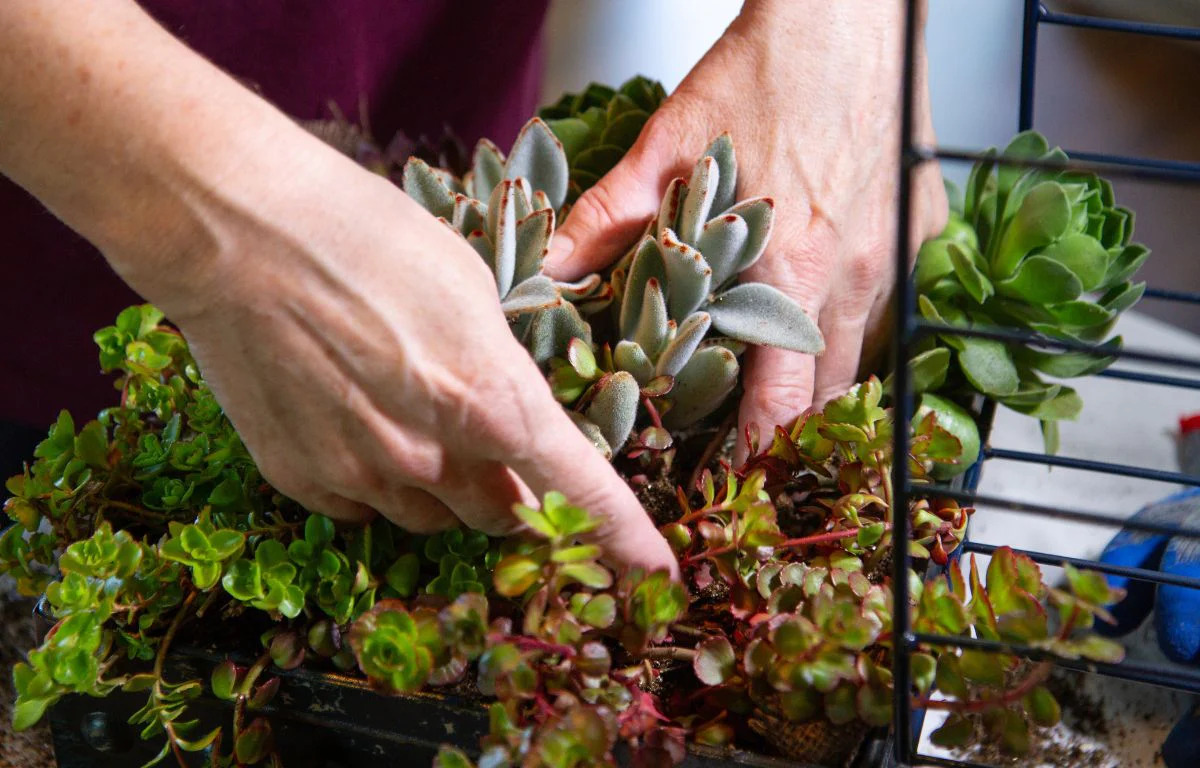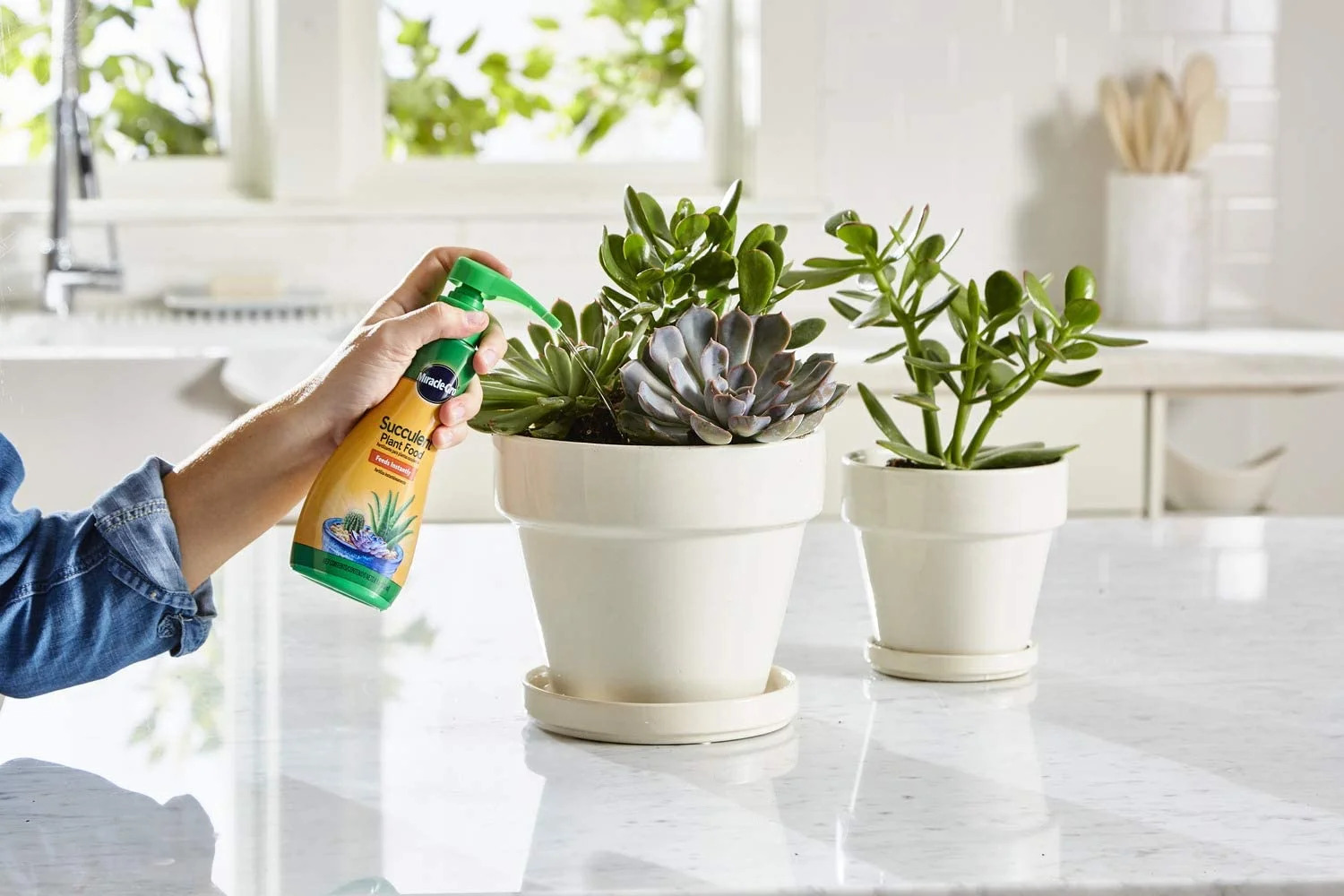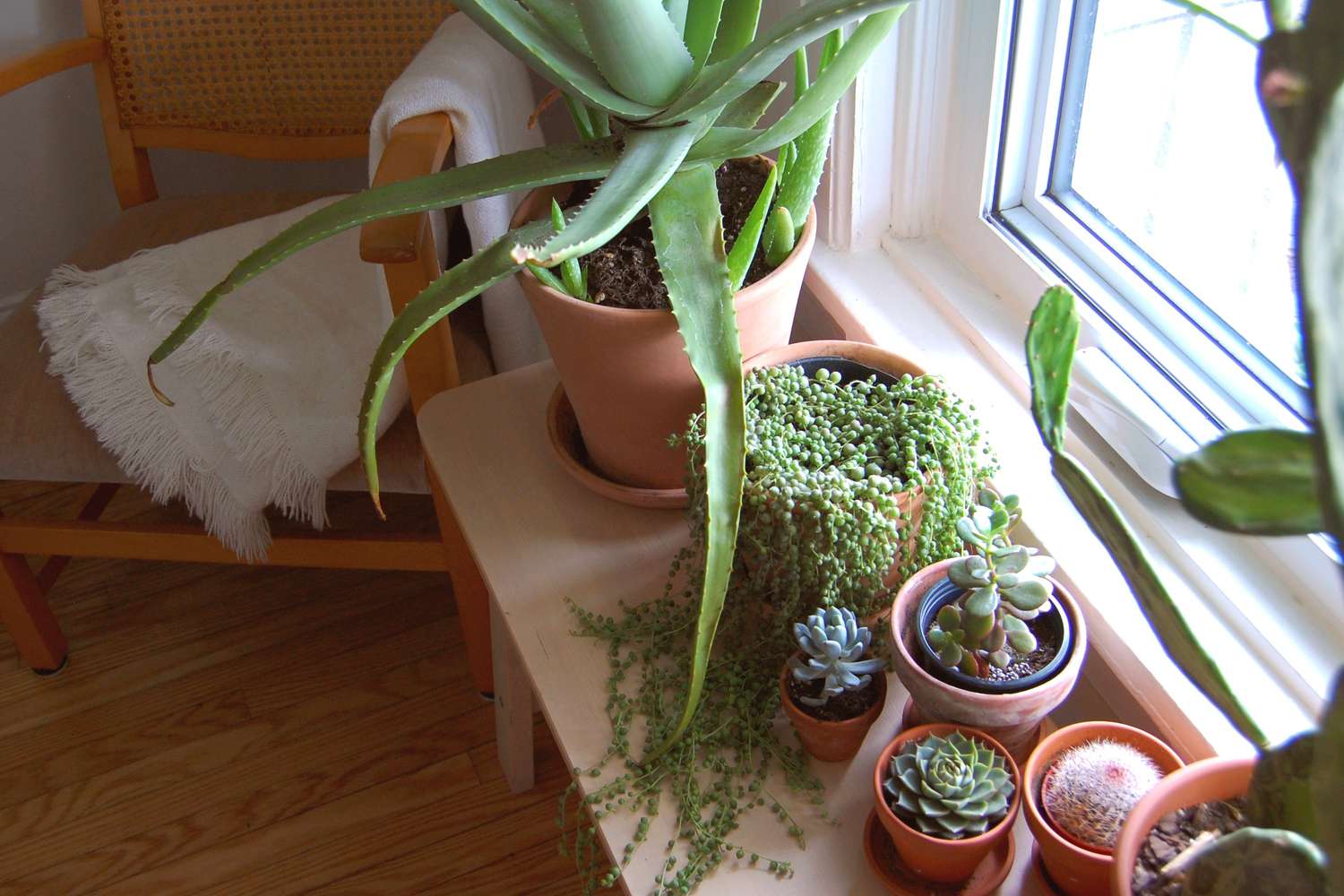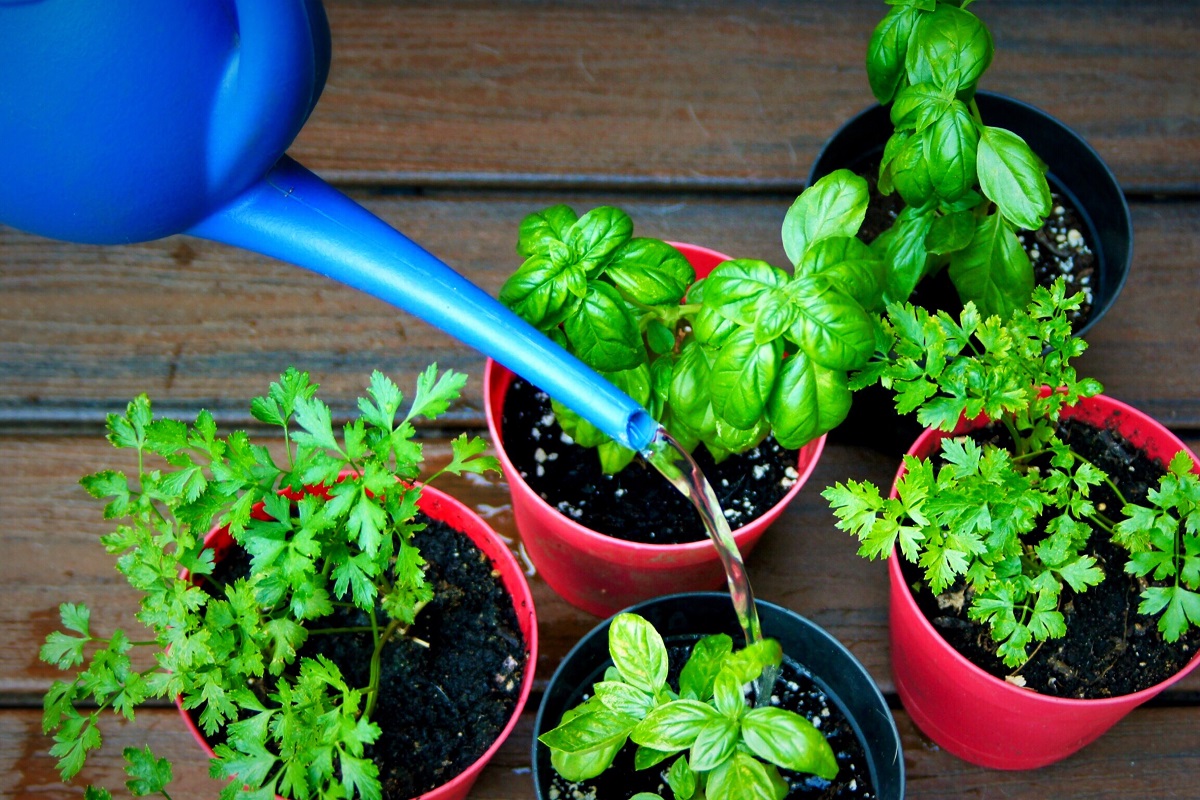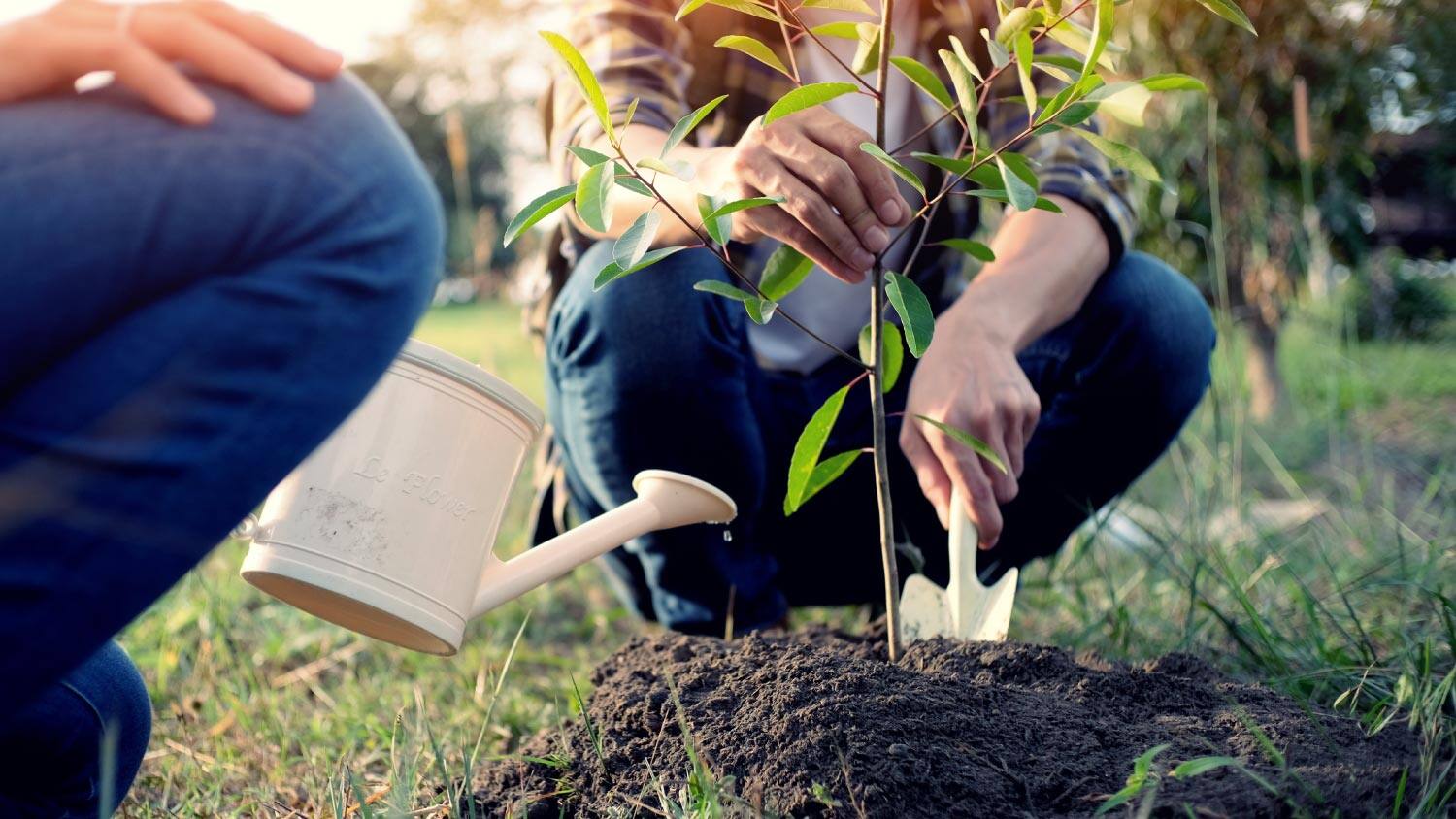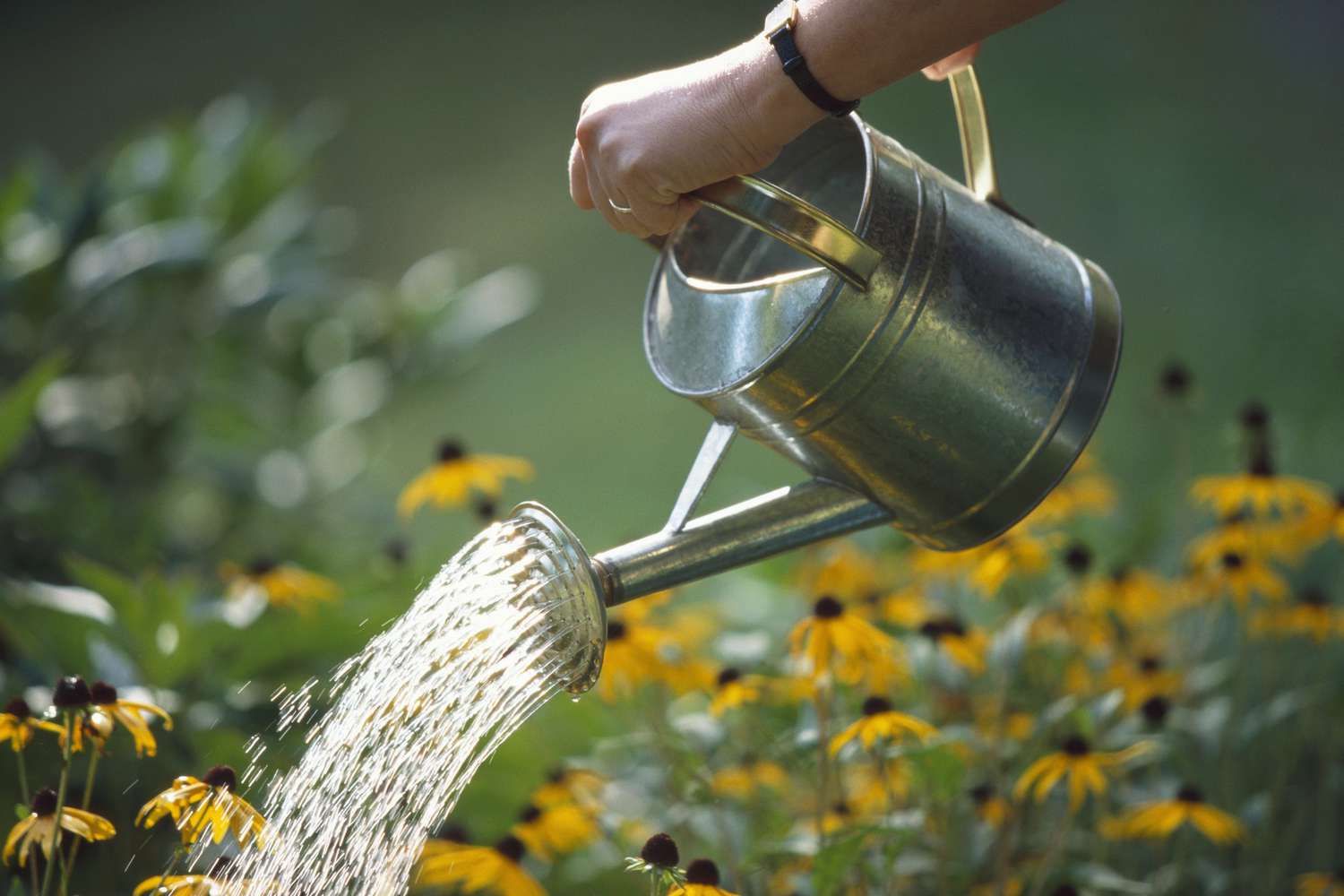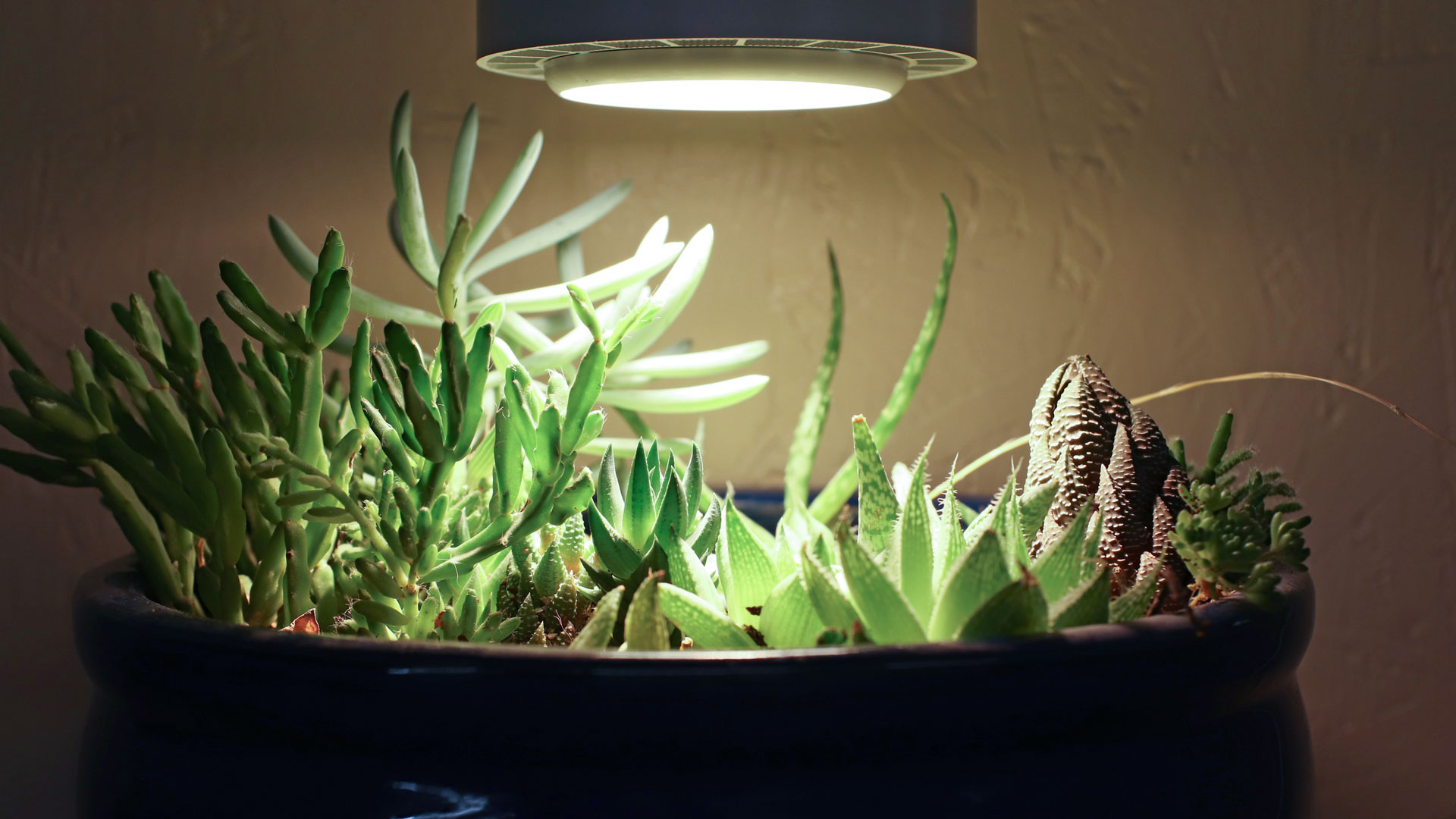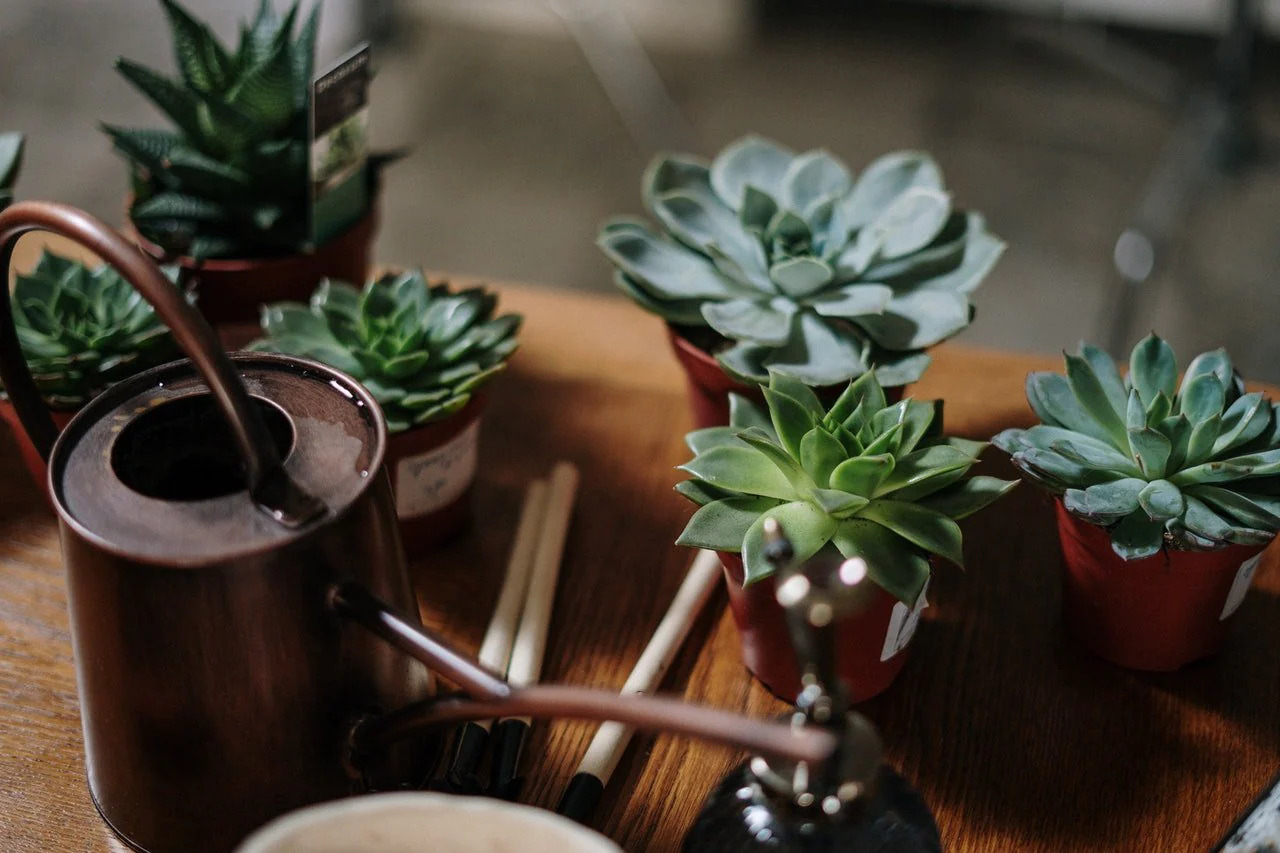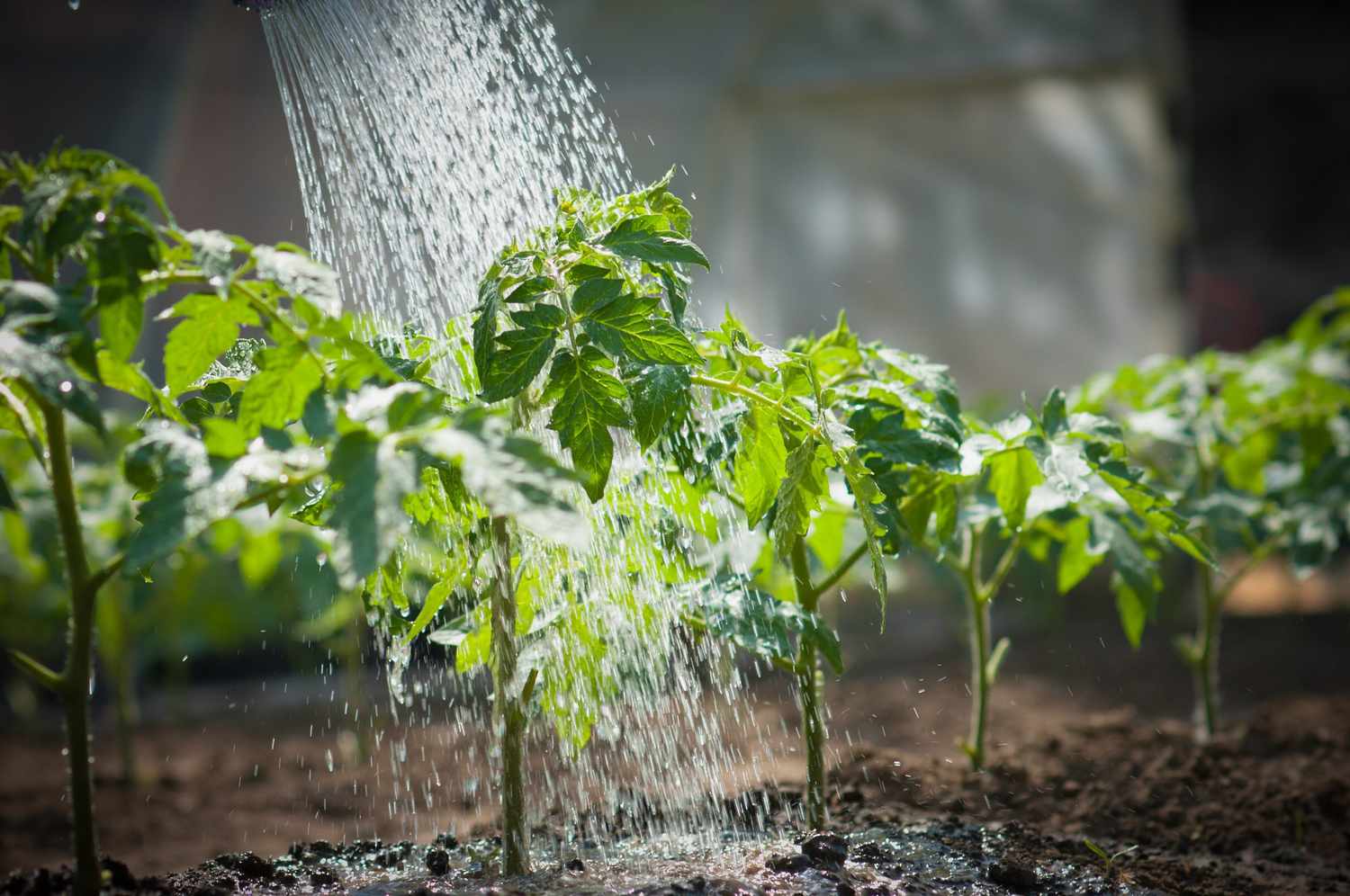Home>Types of Gardening>Ornamental Gardening>How Often Do Succulents Need Water
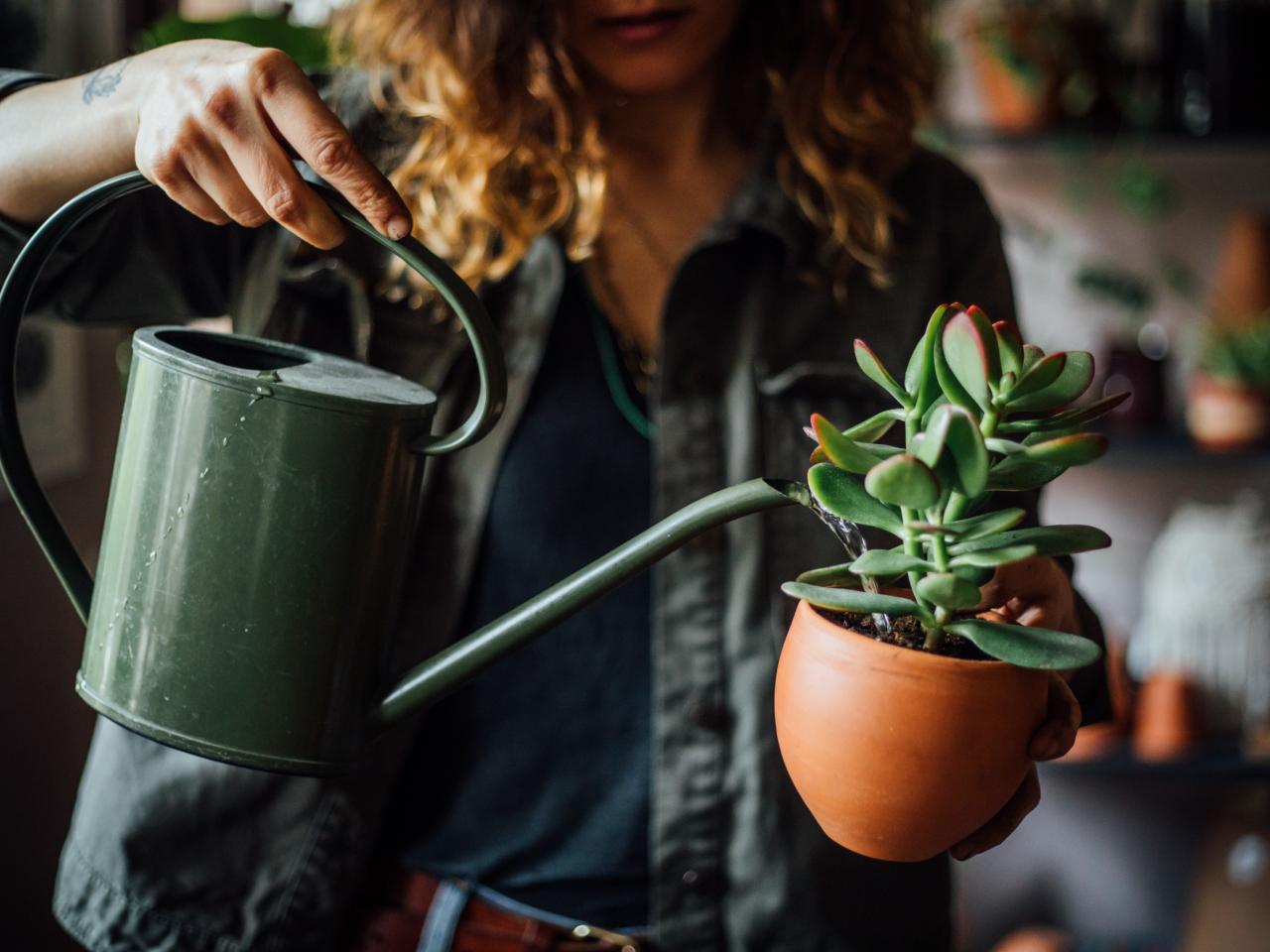

Ornamental Gardening
How Often Do Succulents Need Water
Modified: February 9, 2024
Discover the watering needs of succulents in ornamental gardening. Learn how often to water and maintain healthy succulent plants for your garden.
(Many of the links in this article redirect to a specific reviewed product. Your purchase of these products through affiliate links helps to generate commission for Chicagolandgardening.com, at no extra cost. Learn more)
Table of Contents
- Introduction
- Factors Affecting Watering Frequency
- Understanding Succulent Water Needs
- Signs of Overwatering in Succulents
- Signs of Underwatering in Succulents
- Finding the Right Watering Schedule for Succulents
- Watering Techniques for Succulents
- Best Practices for Watering Succulents
- Common Mistakes to Avoid When Watering Succulents
- Conclusion
Introduction
Welcome to the world of ornamental gardening, where creativity and nature come together to create stunning landscapes filled with beauty and tranquility. One of the key elements that add charm and uniqueness to any garden is the careful selection and cultivation of ornamental plants, including the popular and trendy succulents.
Succulents are a diverse group of plants known for their fleshy leaves and ability to store water. These resilient plants have gained immense popularity in recent years due to their striking appearance and low maintenance requirements. From the iconic Aloe vera with its healing properties to the colorful and rosette-shaped Echeverias, succulents offer an endless array of choices for every gardener.
However, one question that often perplexes succulent enthusiasts is how often these plants need to be watered. While it may seem simplistic to assume that all succulents have the same watering needs, the truth is that the frequency of watering varies based on several factors. This article aims to unravel the mysteries of succulent watering, empowering you with the knowledge to keep your ornamental plants healthy and thriving.
Factors Affecting Watering Frequency
When it comes to watering succulents, there are several factors to consider. Understanding these factors will help you determine the appropriate watering frequency for your ornamental plants. Let’s explore the key factors influencing the watering needs of succulents:
- Climate: The climate in which you live plays a significant role in determining how often succulents need to be watered. In hot and arid regions, where evaporation rates are high, frequent watering may be needed to compensate for the rapid water loss. On the other hand, in cooler and more humid climates, succulents may require less frequent watering.
- Season: Succulents may have different watering requirements depending on the season. During the growing season, typically in spring and summer, succulents are actively growing and may require more frequent watering. In contrast, during the dormant period in fall and winter, succulents enter a period of rest, requiring less water.
- Container and Soil Type: The type of container and soil also influence the watering frequency. Succulents planted in unglazed clay pots evaporate water more quickly compared to those in plastic or glazed containers. Well-draining soil, such as a mix of potting soil and coarse sand or perlite, allows excess water to drain out, preventing the roots from sitting in wet soil for prolonged periods.
- Succulent Variety: Different succulent species have varying water needs. Some succulents, like Sedums and Agaves, are more drought-tolerant and can withstand longer periods between watering. Others, such as certain types of Haworthias and Echeverias, have thinner leaves and may require more frequent watering.
- Plant Size and Age: The size and age of your succulent also affect its watering requirements. Young succulents with underdeveloped root systems require less water compared to mature plants. Additionally, larger succulents may retain water for longer periods, allowing for less frequent watering.
By taking these factors into account, you can develop a tailored watering routine that meets the specific needs of your succulents. It’s important to observe and adjust your watering frequency as needed, considering the unique conditions in your garden or indoor space.
Understanding Succulent Water Needs
Understanding the water needs of succulents is crucial for their overall health and longevity. While they are known for their ability to store water in their leaves and stems, it is important to strike a balance in providing adequate hydration without overwatering. Here are some key points to consider:
Water Storage Adaptation: Succulents have evolved to survive in arid environments by storing water in their leaves, stems, or roots. These water reservoirs allow them to withstand periods of drought. However, this also means that they are prone to damage if exposed to excessive moisture for extended periods.
Watering from Below: To ensure proper water absorption and avoid trapping moisture in the leaves, it is recommended to water succulents from below rather than overhead. This can be achieved by placing the pot in a tray of water and allowing the plant to soak up the water through the drainage holes at the bottom. This method mimics the natural way succulents absorb water, preventing the risk of fungal issues and rot.
Frequency vs. Amount: It is important to understand that succulents require less frequent watering compared to other types of plants. This is because their water storage capacity allows them to survive in dry conditions. Instead of watering them daily, it is generally recommended to water succulents deeply but infrequently. This allows the water to penetrate the soil and reach the root zone, promoting healthy root growth and preventing shallow root formation.
Avoid Overwatering: Overwatering is one of the most common mistakes when it comes to caring for succulents. Excessive moisture can lead to root rot, yellowing of leaves, and overall plant decline. To avoid overwatering, make sure to allow the soil to completely dry out between waterings. Use a well-draining soil mix and avoid leaving your succulents sitting in standing water.
Seasonal Adjustments: As mentioned earlier, succulents have seasonal fluctuations in their water needs. During the active growth period in spring and summer, succulents may require more frequent watering. As the temperatures cool down in fall and winter, their water requirements decrease. It’s important to adjust your watering schedule accordingly to prevent over or underwatering.
By understanding these basic principles of succulent water needs, you can ensure that your ornamental plants thrive and remain healthy for years to come. Remember, it’s always better to underwater your succulents than to overwater them. Observe your plants closely and make adjustments as necessary to find the perfect balance for your succulents’ hydration needs.
Signs of Overwatering in Succulents
Overwatering can be detrimental to the health of succulents, as they are adapted to survive in dry environments. It’s important to be aware of the signs of overwatering so that you can take corrective measures promptly. Here are some common indicators that your succulents may be getting too much water:
- Yellowing or Falling Leaves: One of the first signs of overwatering is the yellowing or wilting of leaves. The leaves may become soft and mushy, eventually falling off the plant. This is often a result of the roots sitting in waterlogged soil, leading to root rot.
- Soft and Mushy Appearance: Overwatered succulents may develop a soft and mushy appearance. The leaves may appear swollen or feel waterlogged to the touch. This is a sign that the cells of the plant have become overfilled with excess moisture.
- Root Rot: Overwatering can lead to root rot, a condition where the roots become damaged due to lack of oxygen and excess moisture. If you notice a foul smell emanating from the soil or see dark, mushy roots when you remove the plant from its pot, it is likely that your succulent is suffering from root rot.
- Mold or Fungus Growth: Excessive moisture promotes the growth of mold and fungi on the soil surface or on the leaves of succulents. If you notice fuzzy patches or a powdery substance on the plant, it is likely a sign of overwatering.
- Stunted Growth: Overwatered succulents may exhibit slow or stunted growth. The excessive moisture prevents the roots from absorbing the necessary nutrients, leading to a decline in overall plant health and size.
- Wilting or Drooping: Although it may seem counterintuitive, overwatered succulents may appear wilted or droopy. This is because the roots are unable to uptake water properly, causing dehydration despite the excess moisture in the soil.
If you notice any of these signs in your succulents, it is crucial to act promptly to save your plants. Adjust your watering schedule, allowing the soil to dry out completely between waterings. Consider repotting your succulent in fresh, well-draining soil to prevent further damage to the roots. If root rot has already set in, it may be necessary to trim off the affected roots and allow the plant to recover in a dry environment.
Remember, prevention is key. By being mindful of your succulents’ watering needs and providing them with appropriate care, you can avoid the pitfalls of overwatering and enjoy healthy, thriving plants in your ornamental garden.
Signs of Underwatering in Succulents
While succulents are known for their ability to tolerate drought-like conditions, underwatering can still pose a threat to their health and vitality. It’s important to be aware of the signs of underwatering so that you can provide the necessary hydration to your succulents. Here are some common indicators that your succulents may be in need of more water:
- Shriveled or Wrinkled Leaves: One of the first signs of underwatering in succulents is the shriveling or wrinkling of their leaves. When succulents lack sufficient water, they begin to lose moisture from their leaves, causing them to become less turgid and appear wilted.
- Dry and Brittle Leaves: As the lack of water persists, the leaves of underwatered succulents can become dry and brittle. They may develop a papery texture and lose their characteristic plumpness. In severe cases, the leaves may even start to curl or curl inward.
- Slow Growth or Dormancy: Underwatered succulents may exhibit slow or stunted growth. When water is scarce, succulents enter a dormant state to conserve energy, ceasing their growth activities. This can result in a lack of new growth, smaller leaves, or even the cessation of blooming for flowering succulents.
- Leaf Drop: In an effort to survive during periods of water scarcity, succulents may shed their lower leaves. This is a defense mechanism to reduce water loss through transpiration and prioritize the limited water supply for the more essential parts of the plant.
- Change in Leaf Color: Underwatered succulents may exhibit changes in leaf color. The leaves may take on a yellow or brown hue, indicating a lack of proper hydration. This is the plant’s response to water stress, as it redirects its resources to essential functions rather than maintaining vibrant leaf color.
- Dry and Crumbly Soil: When succulents are not receiving enough water, the soil they are planted in may become extremely dry. If you notice that the soil has pulled away from the sides of the container or has become dry and crumbly, it is a sign that your succulents require more frequent watering.
If you observe any of these signs in your succulents, take action to address the issue and provide them with adequate hydration. Adjust your watering schedule to ensure that the soil is moist, but not overly saturated, and allow water to reach the root zone. It’s important to find the right balance, avoiding both overwatering and underwatering.
Remember, different succulent varieties may have slightly different water requirements. If you have a diverse collection of succulents, observe each plant individually and adjust your watering schedule accordingly. With proper care and attention, your succulents will thrive and bring beauty to your ornamental garden.
Finding the Right Watering Schedule for Succulents
Establishing a proper watering schedule is crucial for the health and well-being of your succulents. While there are general guidelines to follow, it’s important to remember that every succulent is unique, and factors such as climate, season, and individual plant characteristics can influence their watering needs. Here are some tips to help you find the right watering schedule for your succulents:
- Observe and Monitor: One of the best ways to determine the watering needs of your succulents is to closely observe and monitor their appearance and the moisture level of the soil. Pay attention to signs of over or underwatering and adjust accordingly.
- Touch and Feel: Get in the habit of touching the leaves and feeling the soil. Succulents that require watering will generally have leaves that feel less turgid or a soil that is completely dry. Water the plants when the leaves start to feel softer or the soil is dry several inches below the surface.
- Learn from Experience: As you care for your succulents over time, you will gain valuable experience and insight into their individual watering needs. Keep a record or journal of your watering schedule and the behavior of your plants to help you determine the optimal routine.
- Consider the Season: Remember that the watering needs of succulents can vary between seasons. In the warmer months when succulents are actively growing, they may require more frequent watering. As the weather cools down and growth slows, reduce the frequency of watering.
- Avoid Overwatering: It is safer to underwater succulents than to overwater them. Over time, you will become familiar with the signs of thirst in your plants and can adjust your watering schedule accordingly. Remember, succulents are adapted to survive in arid conditions, so they can tolerate periods of drought.
- Consider Environmental Factors: Take into account the specific environmental conditions in your garden or indoor space. Factors such as humidity, sunlight exposure, and airflow can affect the rate at which succulents dry out and may influence your watering frequency.
- Use Well-Draining Soil: The type of soil you use is crucial for maintaining the right moisture balance for your succulents. Invest in a well-draining soil mix specifically formulated for succulents or create your own by combining potting soil with perlite or coarse sand. This will ensure excess water can drain away and prevent the roots from sitting in stagnant moisture.
- Adjust as Needed: Remember that the watering needs of succulents can change over time based on their growth and the changing conditions in your garden. Stay vigilant and adjust your watering schedule as necessary to meet the evolving needs of your plants.
By following these guidelines and being attentive to the unique needs of your succulents, you will be able to establish a watering schedule that promotes their health and longevity. Remember, finding the right balance between hydration and dryness is key to maintaining thriving and vibrant succulents in your ornamental garden.
Watering Techniques for Succulents
Proper watering techniques can make a significant difference in the overall health and vitality of your succulents. By employing the right methods, you can ensure that your plants receive adequate hydration while avoiding the pitfalls of overwatering. Here are some effective watering techniques specifically tailored for succulents:
- Soak and Dry Method: The soak and dry method is a popular and effective technique for watering succulents. Water the plant thoroughly until water flows out of the drainage holes at the bottom of the pot. Allow the excess water to drain away completely and ensure that the soil is dry before watering again. This method promotes deep root growth and helps prevent root rot.
- Bottom Watering: In this technique, instead of watering the soil from above, you can place the potted succulent in a tray or container filled with water and allow the plant to soak up water through the drainage holes. This method prevents excess moisture on the leaves and avoids potential issues such as rot or fungal diseases.
- Misting: Misting is a technique often used to provide hydration to succulents without saturating the soil. Use a fine mist spray bottle and mist the leaves of the succulents, focusing on providing moisture to the aerial parts of the plant. This method is beneficial during dry seasons or in arid environments, but should not replace regular watering.
- Watering from Below: As mentioned earlier, succulents prefer to be watered from below rather than overhead. By watering directly at the base of the plant, the water can penetrate the soil and reach the roots more effectively. This method also helps prevent water from accumulating on the leaves, reducing the risk of rot and fungal issues.
- Use a Watering Can or a Narrow Spout: When watering succulents, it’s advisable to use a watering can with a narrow spout or a hose attachment with a gentle stream of water. This allows for precise and controlled watering, ensuring that water reaches the base of the plant without splashing excessively on the leaves.
- Time Your Watering: The time of day you water your succulents can also make a difference. It’s best to water in the early morning when the temperatures are cooler, reducing the risk of moisture evaporating too quickly. Avoid watering late in the day or evening, as this can leave the plants damp overnight, which can increase the chances of fungal growth.
- Use a Moisture Meter: If you want a more precise way to gauge the moisture levels in the soil, consider using a moisture meter. These handy tools can help you determine when it’s time to water by measuring the moisture content deep in the soil.
Experiment with these watering techniques and observe how your succulents respond. Remember, each succulent may have slightly different preferences, so adjust the method based on the specific needs of your plants. By mastering the art of proper watering, you will provide your succulents with the ideal balance of moisture, leading to healthy and thriving ornamental plants.
Best Practices for Watering Succulents
In addition to specific watering techniques, there are several best practices that can help ensure the optimal health and growth of your succulents. By following these guidelines, you can create a watering routine that nurtures your ornamental plants effectively:
- Establish a Schedule: Determine a regular watering schedule that suits your succulents’ needs. Rather than watering on a set calendar schedule, monitor the moisture level of the soil and water when it has completely dried out.
- Water Thoroughly: When you do water your succulents, make sure to water thoroughly. Allow water to flow out of the drainage holes of the container, ensuring that the roots receive adequate hydration. This helps flush out any accumulated salts and fertilizers that may have built up in the soil.
- Consider the Climate: Take the climate and weather conditions into account when determining your watering schedule. Succulents may require more frequent watering during hot and dry periods, while less frequent watering may be necessary during cooler and more humid times of the year.
- Use Well-Draining Soil: It cannot be stressed enough how crucial well-draining soil is for succulents. Invest in a good quality soil mix specifically formulated for succulents, or create your own by adding perlite or coarse sand to a standard potting mix. This ensures that excess water can drain out quickly, preventing the roots from sitting in wet soil for too long.
- Avoid Overcrowding: Ensure that your succulents are not overcrowded in their containers or garden beds. Overcrowding can lead to poor air circulation, which can contribute to excess moisture retention and the development of fungal diseases. Space your succulents appropriately to allow for proper growth and airflow.
- Adjust Based on Season: As mentioned previously, succulents have different watering needs throughout the seasons. Adjust your watering schedule accordingly, watering more frequently during the active growing season and reducing watering during the dormant period.
- Monitor for Pests and Diseases: Regularly inspect your succulents for signs of pests or diseases, as these can affect the overall health of your plants. Overwatering can create favorable conditions for pests and diseases, so by implementing proper watering practices, you can minimize these risks.
- Be Mindful of Humidity: If you live in a humid climate or are growing succulents indoors, be aware that the moisture in the air can affect the drying speed of the soil. Adjust your watering schedule accordingly, allowing for longer drying periods between waterings.
- Learn from Experience: Every gardener’s experience with succulents is unique, so don’t be afraid to learn from your own trial and error. Observe how your succulents respond to different watering practices and adjust as needed to meet their specific needs.
By adhering to these best practices and paying close attention to the needs of your succulents, you can establish a watering routine that encourages their well-being and ensures their ornamental beauty for years to come.
Common Mistakes to Avoid When Watering Succulents
While caring for succulents, it’s important to be aware of common watering mistakes that can hinder their growth and cause long-term damage. By avoiding these mistakes, you can provide your succulents with the ideal watering conditions and promote their overall health and vitality. Here are some common mistakes to avoid when watering succulents:
- Overwatering: The most common mistake is overwatering succulents. These plants are adapted to survive in dry environments, and excessive moisture can lead to root rot, fungal diseases, and overall decline. Always allow the soil to dry out completely before watering again.
- Using the Wrong Soil: Succulents require well-draining soil to prevent excess moisture retention. Using heavy or compacted soil that doesn’t allow water to drain away can lead to root rot. Ensure that your succulents are planted in a well-draining soil mix specifically formulated for succulents or create your own with the right proportions of potting soil, perlite, or coarse sand.
- Watering on a Schedule: Following a strict watering schedule without considering the actual moisture needs of your succulents can be detrimental. Succulents have different watering requirements based on various factors. Instead of relying solely on a calendar-based schedule, check the moisture level of the soil and water only when it has completely dried out.
- Ignoring Seasonal Changes: Succulents have different needs in different seasons. Failing to adjust your watering routine based on seasonal changes can lead to underwatering or overwatering. During the active growing season, succulents may require more frequent watering, while they need less water during their dormant period.
- Watering from Above: Watering succulents from above, especially with a heavy stream, can lead to water pooling on the leaves and in the rosettes. This can create a breeding ground for fungal diseases and rot. Instead, opt for bottom watering or watering at the base of the plant to avoid excessive moisture on the foliage.
- Not Providing Enough Light: Insufficient light can result in stunted growth and poor water absorption in succulents. When succulents are not receiving enough light, they are unable to properly utilize the water you provide. Make sure to place your succulents in a location where they have access to bright, indirect sunlight for several hours a day.
- Ignoring the Signs: It’s essential to pay attention to the signs your succulents are giving you. Yellowing or falling leaves, soft or wrinkly appearance, dry and brittle leaves – these are all indicators that something may be amiss with your watering routine. Regularly monitor your succulents and adjust your watering practices based on their specific needs.
- Overcrowding: Planting too many succulents in one container or bed can create a crowded environment. Overcrowding restricts airflow, increases humidity, and can lead to moisture-related issues. Ensure that your succulents have enough space to grow and receive adequate airflow to prevent stagnant moisture around the plants.
- Using Cold Water: Using very cold water, especially during winter months, can shock your succulents and hinder their growth. Allow the water to come to room temperature before watering to avoid temperature stress on the plants.
- Watering Foliage Directly: When watering succulents, it’s important to focus on the soil and roots rather than wetting the foliage. Wet leaves, especially in combination with insufficient airflow, can create an environment for pests and diseases to thrive. Direct the water to the base of the plant to avoid moisture on the leaves.
By avoiding these common watering mistakes, you can provide your succulents with the optimal conditions for growth and ensure their long-term health. Remember to adapt your watering practices based on the unique needs of your succulents and the specific environmental conditions in your garden or indoor space.
Conclusion
Watering succulents may seem like a simple task, but it requires careful consideration of various factors to ensure the health and longevity of these ornamental plants. By understanding the unique water needs of succulents and implementing effective watering techniques, you can create an optimal environment for their growth and beauty.
Factors such as climate, season, container type, and succulent variety all influence the frequency and amount of water required by these plants. It is essential to strike a balance between providing adequate hydration without overwatering, which can lead to root rot and other moisture-related issues.
By observing the signs of over and underwatering, adjusting your watering schedule based on the specific needs of each succulent, and using well-draining soil, you can prevent common watering mistakes and create the ideal conditions for your succulents to thrive.
Remember, finding the right watering routine for succulents is a process of trial and error. Each plant is unique, and it may take time to learn and understand their individual preferences. Through careful observation, experience, and adjusting your watering practices as needed, you will develop the knowledge and intuition to provide your succulents with the ideal balance of moisture.
So, take the time to understand your succulents’ water needs, and enjoy the beauty and tranquility they bring to your ornamental garden. With proper watering practices, your succulents will flourish, delighting you with their vibrant colors, unique shapes, and resilience.
